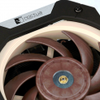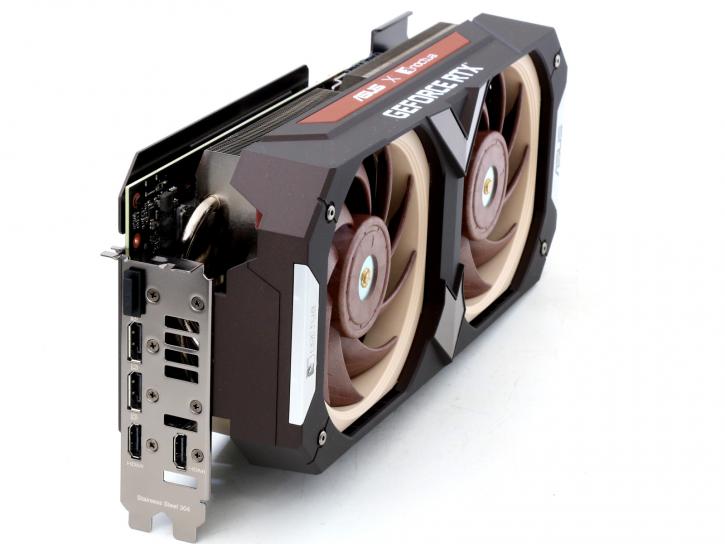Introduction
ASUS GeForce RTX 3080 Noctua OC review
We review the GeForce RTX 3080 Noctua OC variant; we tried the 3070 model a few months ago, and the Noctua edition appears to be a success. We are aware of it, and you can debate its aesthetics and layout, but the card performs as promised and is quite quiet. The ASUS RTX 3080 Noctua OC features a custom-designed cooling solution that was created in partnership with the Austrian business.
It is equipped with a thick aluminum fin-stack heatsink and ventilated by a pair of large 120 mm Noctua fans that have been tuned by the manufacturer to prioritize low noise above all else in order to achieve maximum performance. Believe it or not, but as we move towards late 2022, back in September 2020, NVIDIA declared three initial Ampere graphics cards in its inaugural launch wave. A week before announcements, specifications of the GeForce RTX 3070, 3080, and 3090 took a twist; the shader core count mysteriously doubled up from what everybody expected. The GPUs are fabricated on an 8nm node derived from Samsung. This process further develops Samsung's 10nm process; no EUV is applied in production just yet. The first wave of announcements would see the GeForce RTX 3080 and 3090 being released first, and, as a bit of a surprise, the GeForce RTX 3070 was arriving in roughly the same timeframe as well. The lineup nearly doubles ray-tracing performance with Gen2 ray-tracing cores and 3rd iteration Tensor cores. These cards will all be PCIe 4.0 interface compatible and offer HDMI 2.1 and DisplayPort 1.4a, but most importantly is that exorbitant Shader processor count (referred to as CUDA cores by NVIDIA), passing the 10K marker for the flagship product, nobody... not even us, saw that one coming. With roughly half that shader processor count, we now meet the NVIDIA GA104 GPU, initially to be used solely in the GeForce RTX 3070 graphics cards. And despite a lower segmented card, it still holds a big GPU die; the 3070's GA104-300-A1 GPU is firing up over 17 billion transistors. To compare, a GeForce RTX 3080 is listed at 8,704 Shader cores, and the GeForce RTX 3090 (GA102) has 10496 Shader cores. In this review, we'll check out the Founder edition GeForce RTX 3070, paired with 8GB of GDDR6 graphics memory. A product that runs a boost clock of 1730 MHz and the sheer muscle power makes you smile, a lasting one. The Ampere lineup nearly doubles ray-tracing performance with Gen2 ray-tracing cores and 3rd iteration Tensor cores. These cards will all be PCIe 4.0 interface compatible and offer HDMI 2.1 and DisplayPort 1.4a, but most importantly is the exorbitant shader processor count (referred to as CUDA cores by NVIDIA).
ASUS GeForce RTX 3080 Noctua OC 10G
The possibility that ASUS would collaborate with Austrian cooling specialist Noctua to develop a customized set of graphics cards that would be based on proprietary cooling solutions was first raised several months ago. After a leak at ASUS Vietnam, it was confirmed, the product would be available for purchase. The goal of this card is to provide a near-silent gaming experience by first and foremost improving the cooling system on the card. Asus utilizes the RTX 3080 TUF PCB and collaborated with the cooling connoisseurs from Noctua in order to bring this graphics card to market. When it comes to reducing noise, volume and efficiency are critical factors to consider. The specs can be a little frightening. This puppy makes use of a HUGE 4.3-slot design and measures 310mm in length, 145mm in height, and wait for it ... 83mm in thickness. Yes 4 slots wide, still not an issue for me as these cards can't SLI anyway. The sample weighs just over 1.5kg when it is placed on the scale, a significant amount of weight. Noctua created a custom shroud to hold two 120mm NF-A12x25 PWM fans in their house color beige and cream scheme in this particular instance. The colors and lack of RGB in the shroud may disappoint some, but it is a solidly constructed piece of equipment nonetheless. The card has a dual BIOS that alternates between extremely Quiet (1785 MHz boost) and a Performance mode offering an 1815 MHz boost. This gives the product a mild overclock. Asus also sells a non-OC version of the card that's ostensibly identical in all other respects. Both have 10GB of memory and operate at a standard reference frequency rate.


